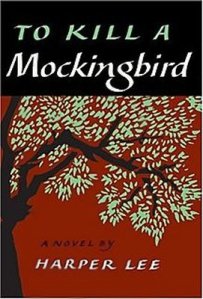Well, it’s HOT, and it seems like the urge to stay out of the heat has led to lots of thoughtful conversations around the web this week.
We begin with a new take on To Kill a Mockingbird, the classic by Harper Lee that celebrated its 50th Anniversary just this week. While it’s been taught for years as the quintessential anti-racism novel, Stuff White People Do has a fascinating argument for why the book can also be read as racist. Among the arguments: “The novel reduces black people to passive, humble victims, thereby ignoring the realities of black agency and resistance.” Even if you’ve got a deep love for To Kill a Mockingbird, it’s worth thinking about who it was written for, how it can be read differently by different readers, and how it fits into the larger picture of a literature curriculum heavily dominated by white authors.
On her blog Brooklyn Arden, Scholastic editor Cheryl Klein offers up one way to combat whitewashing in mainstream publishing today: organize bloggers and readers to pick 1 book with a protagonist of color on the front cover, and go out and buy it in one week. The idea is to get said book on the bestseller list, thus proving to publishers that books with people of color on covers sell (hey, you don’t have to prove it to us!). Whether this becomes a movement or not, one thing is clear: kicking the whitewashing habit is a joint effort of publishers and readers.
Returning to the age-old discussion of who can write about whom, Ellen Wittlinger has an article in this month’s Horn Book about the new Lamda Literary Award guidelines, which now stipulate that only LGBT authors are eligible for the awards (which recognize the best LGBT literature). As with all cross-cultural writing, the awards bring up some important questions: Are gay people inherently more qualified to write about gay people? Do they inherently write better LGBT books? Or, as with the Coretta Scott King award, is it just a matter of carving out some safe space and recognition for a group that’s been traditionally marginalized, silenced, and overlooked?
Finally, having trouble teaching your kids about race issues? Apparently, there’s an app for that. KJ Dell’Antonia over at Slate talks about two new iPhone apps from the Race Awareness Project: Guess My Race where users are shown pictures of people and then try to identify their race, and Who Am I, where one user chooses a photo and the other must guess, by asking questions, which photo it is. Dell’Antonia describes playing with her son:
After a few rounds of this, we tried Who Am I, and when I told Sam a picture I’d chosen was of “someone I’d call black,” he struggled over which of the people of varying shades of pink and brown to exclude. I realized the whole thing begged a question, and so I asked him which matters more—the way I see a person, or the way they see themselves?
Nice to see the forces of iPhone being used for good.
Stay cool, everyone!








